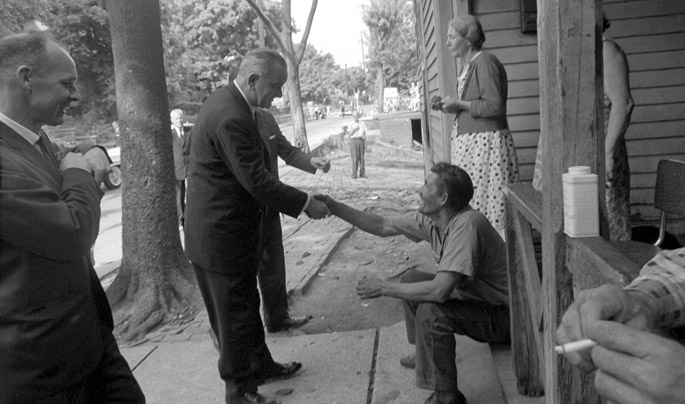

Fifty years ago today, Johnson claimed, “with your courage and with your compassion and your desire, we will build a Great Society... where no child will go unfed, and no youngster will go unschooled.”
Right through 1968, a long series of major legislative changes followed in civil rights, health, education, housing and development, transit, Social Security, and cash and near-cash assistance programs like food stamps. Almost immediately, they came under fire as Nixon tried to kill off most of the new spending programs. Then under Reagan and Clinton, many programs were devolved to the states, where some of them withered away.
The most durable of the innovations were in education and health. Public education investments give people the tools to become financially secure by providing free education through high school and offering extensive support for higher education. It is hard to remember today that in 1940, half of Americans had no more than an 8th-grade education, and 1 in 20 had completed college.
Of the Great Society initiatives, Social Security enhancements and health insurance cost the most. Medicare and Medicaid continue to eat up a larger share of the federal budget every year, while other Great Society programs have mostly stayed small. The outsized spending on older Americans has contributed to a gradual shift in poverty away from the old and into younger age groups.
A few programs were deemed failures and shut down, like Model Cities, though some of those supposed failures look better through the long lens of history. The majority of the programs have been deemed successful however, even much reviled programs like Job Corps, which garners $2 of benefits for society for every dollar spent.
No Great Society program has continued unchanged since 1968. This is perhaps best exemplified by food stamps, a program that mushroomed in size in the 2000s as it was called on to replace shrinking cash welfare programs. (For more on the recent evolution of such programs, see the Safety Net Almanac.)
Because the Great Society and the War on Poverty began with such grandiose aims—and so quickly met stern political opposition and legislative and executive evisceration—it is hard to evaluate the programs as succeeding or failing. True, its lofty aims have not been achieved, but remarkable progress has been made on thorny issues—and these embattled programs have played an important role in that progress.
See also:
The Moynihan Report Revisited [PDF]
Black Families Five Decades After the Moynihan Report [video]
Photo by AP
Let’s build a future where everyone, everywhere has the opportunity and power to thrive
Urban is more determined than ever to partner with changemakers to unlock opportunities that give people across the country a fair shot at reaching their fullest potential. Invest in Urban to power this type of work.